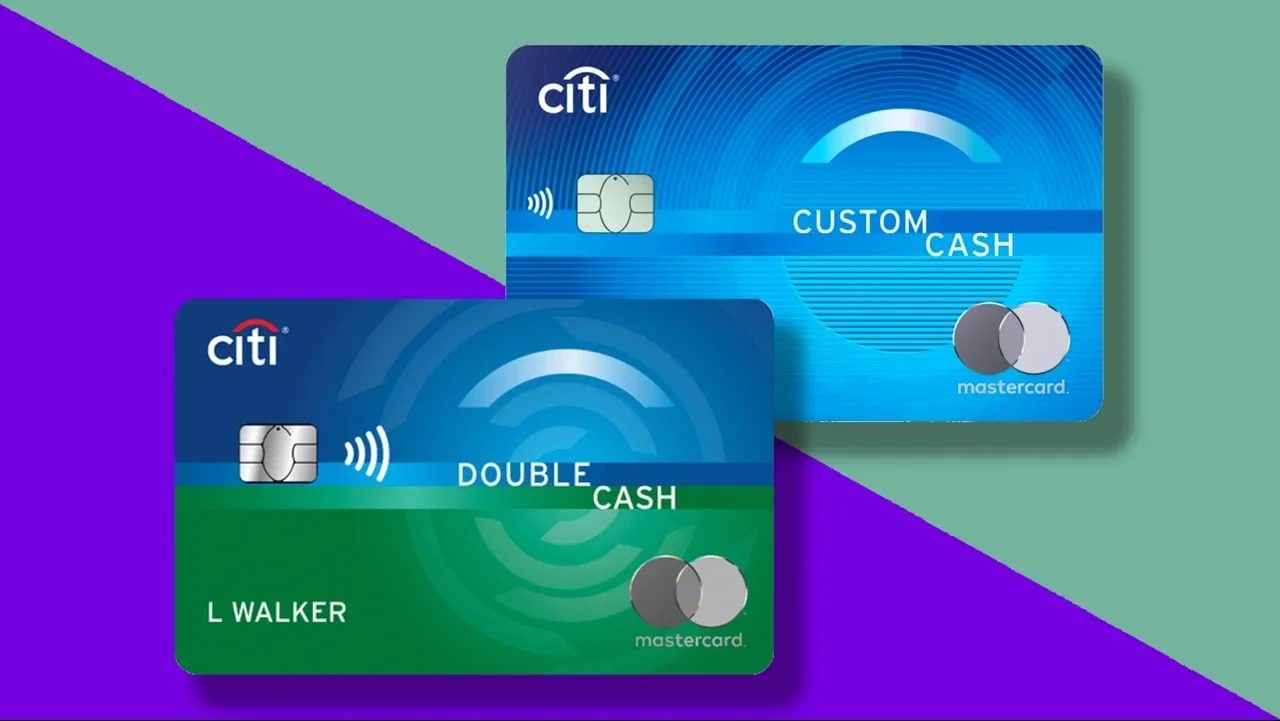

Finance
When Do You Get Security Back For Secured Card
Modified: March 5, 2024
Learn when you can get your security deposit back for a secured credit card and manage your finances wisely. Understanding the process is crucial for building credit and financial stability.
(Many of the links in this article redirect to a specific reviewed product. Your purchase of these products through affiliate links helps to generate commission for LiveWell, at no extra cost. Learn more)
Table of Contents
**
Introduction
**
Secured credit cards are a valuable financial tool for individuals looking to build or rebuild their credit. Unlike traditional credit cards, secured cards require a cash deposit as collateral, which also determines the cardholder's credit limit. This unique feature makes secured credit cards accessible to individuals with limited or damaged credit histories, providing them with an opportunity to demonstrate responsible credit management.
Secured cards function similarly to traditional credit cards, allowing cardholders to make purchases, build credit, and establish a positive payment history. The primary difference lies in the required security deposit, which mitigates the risk for the card issuer. As individuals utilize secured cards and make timely payments, they can improve their credit scores and eventually transition to unsecured credit cards.
Understanding the nuances of secured credit cards, including the mechanics of security deposits and the process of reclaiming them, is essential for individuals embarking on their credit-building journey. This article will delve into the intricacies of secured cards, shed light on how security deposits operate, and provide insights into the timeline and factors influencing the return of security deposits. By unraveling these aspects, readers will gain a comprehensive understanding of when and how they can expect to retrieve their security deposits, empowering them to make informed financial decisions.
Understanding Secured Cards
Secured credit cards are designed to assist individuals in establishing or repairing their credit. Unlike traditional credit cards, secured cards require a security deposit, which serves as collateral and determines the cardholder’s credit limit. This deposit reduces the risk for the card issuer, making secured cards accessible to individuals with limited credit history or past credit challenges.
Upon obtaining a secured credit card, the cardholder is required to provide a cash deposit to the card issuer. This deposit typically ranges from $200 to $2,500, depending on the issuer’s terms and the cardholder’s creditworthiness. The deposit amount is often equivalent to the card’s credit limit, providing a sense of security for the issuer in case the cardholder defaults on payments.
Despite the security deposit requirement, secured cards function similarly to traditional credit cards. Cardholders can use them for various transactions, including purchases and bill payments. It is important to note that the security deposit is not used to cover monthly payments unless the cardholder defaults. As the cardholder utilizes the secured card and makes timely payments, the card issuer reports this activity to credit bureaus, contributing to the cardholder’s credit history and score.
Secured credit cards are an effective tool for individuals aiming to build or rebuild their credit. By responsibly managing a secured card, cardholders can demonstrate their creditworthiness over time, potentially leading to improved credit scores and increased access to financial opportunities.
How Security Deposits Work
Security deposits serve as a fundamental aspect of secured credit cards, providing a layer of protection for both card issuers and cardholders. When an individual applies for a secured credit card, they are required to submit a cash deposit to the card issuer. This deposit acts as collateral and determines the card’s credit limit, which is typically a percentage of the deposited amount.
Once the security deposit is received, the card issuer holds the funds in a separate account, safeguarding them in case the cardholder defaults on payments. In essence, the security deposit mitigates the risk for the issuer, allowing them to extend credit to individuals with limited or impaired credit histories.
It’s important to note that the security deposit is not used to cover monthly payments unless the cardholder defaults on their account. As long as the cardholder makes timely payments and manages the card responsibly, the security deposit remains intact and continues to secure the card’s usage.
While the security deposit is held as collateral, it does not serve as a direct source of payment for the cardholder’s charges. Instead, the deposit acts as a safeguard for the issuer, providing assurance that funds are available in the event of non-payment. As the cardholder demonstrates responsible credit management, they have the opportunity to build a positive credit history, potentially leading to an increased credit score and the eventual return of their security deposit.
Understanding the function of security deposits is crucial for individuals considering secured credit cards. By comprehending how these deposits operate, cardholders can make informed decisions about their credit-building journey and gain clarity on the process of reclaiming their security deposits in the future.
When Will You Get Your Security Deposit Back?
Reclaiming the security deposit from a secured credit card is a significant milestone for cardholders, signifying their progress in building or rebuilding their credit. The timeline for retrieving the security deposit varies and is contingent on several factors, including the individual’s credit behavior and the card issuer’s policies.
Typically, cardholders become eligible to reclaim their security deposit when they demonstrate responsible credit management over a period of time. This entails consistently making on-time payments, keeping balances low, and refraining from defaulting on the card. While specific timelines may vary, many card issuers review a cardholder’s account after a designated period, often ranging from 12 to 18 months, to assess their creditworthiness and overall performance.
If the card issuer determines that the cardholder has exhibited responsible credit behavior and improved their credit profile, they may initiate the process of returning the security deposit. This can result in the cardholder receiving the full amount of their initial deposit, along with any accrued interest, in some cases. However, it’s important to note that the return of the security deposit is not guaranteed and is subject to the card issuer’s evaluation of the cardholder’s creditworthiness.
It’s essential for cardholders to maintain consistent and positive credit habits to enhance their prospects of reclaiming their security deposit. By demonstrating financial responsibility and prudent credit management, cardholders can position themselves favorably for the eventual return of their deposit, marking a significant achievement in their credit-building journey.
Understanding the timeline and prerequisites for reclaiming the security deposit empowers cardholders to navigate their credit-building efforts strategically and reinforces the importance of maintaining sound credit practices to secure the return of their deposit.
Factors Affecting Security Deposit Return
Several key factors influence the return of a security deposit associated with a secured credit card. Understanding these factors is crucial for cardholders seeking to reclaim their deposits and transition to unsecured credit options.
- Credit Behavior: The primary determinant of security deposit return is the cardholder’s credit behavior. Consistently making on-time payments, keeping credit utilization low, and avoiding defaults are pivotal in demonstrating responsible credit management. Positive credit behavior signals to the card issuer that the cardholder is a low-risk borrower, increasing the likelihood of the security deposit’s return.
- Account Review: Many card issuers conduct periodic reviews of secured card accounts to assess the cardholder’s creditworthiness and overall financial progress. These reviews often occur after a specified timeframe, typically ranging from 12 to 18 months. During the review, the issuer evaluates the cardholder’s credit behavior and financial stability to determine if they qualify for a security deposit refund.
- Credit Score Improvement: A noticeable improvement in the cardholder’s credit score can positively impact the likelihood of receiving the security deposit back. As the cardholder’s credit score rises due to responsible credit management, the issuer may view them as a lower credit risk, potentially leading to the initiation of the deposit return process.
- Issuer’s Policies: Each card issuer maintains specific policies regarding the return of security deposits. These policies outline the criteria and conditions under which a security deposit may be refunded. It’s essential for cardholders to familiarize themselves with their issuer’s policies and review the terms and conditions associated with their secured credit card.
By comprehending the factors influencing security deposit return, cardholders can proactively engage in credit-building behaviors and align their financial habits with the criteria considered by card issuers. This proactive approach enhances the likelihood of securing the return of their security deposit and progressing toward unsecured credit options, marking a significant achievement in their financial journey.
Conclusion
Secured credit cards offer a valuable pathway for individuals to establish or rebuild their credit, providing a bridge to financial stability and expanded credit opportunities. Understanding the mechanics of secured cards, including the role of security deposits and the process of reclaiming them, is essential for individuals navigating their credit-building journey.
By comprehending how security deposits function and the factors influencing their return, cardholders can strategically manage their credit behavior to enhance their prospects of regaining their deposits. Demonstrating responsible credit management, maintaining positive credit habits, and adhering to the issuer’s policies are pivotal steps toward reclaiming the security deposit and transitioning to unsecured credit options.
Reclaiming the security deposit from a secured credit card represents a significant milestone, signifying the cardholder’s progress in building a positive credit history and financial stability. As individuals cultivate prudent financial practices and exhibit creditworthiness, they position themselves favorably for the eventual return of their deposit, marking a pivotal achievement in their credit-building journey.
Ultimately, the journey from a secured credit card to an unsecured credit card is a testament to the cardholder’s dedication to financial improvement and responsible credit management. By leveraging secured cards effectively, individuals can pave the way for enhanced credit opportunities, improved financial well-being, and the realization of their long-term financial goals.














